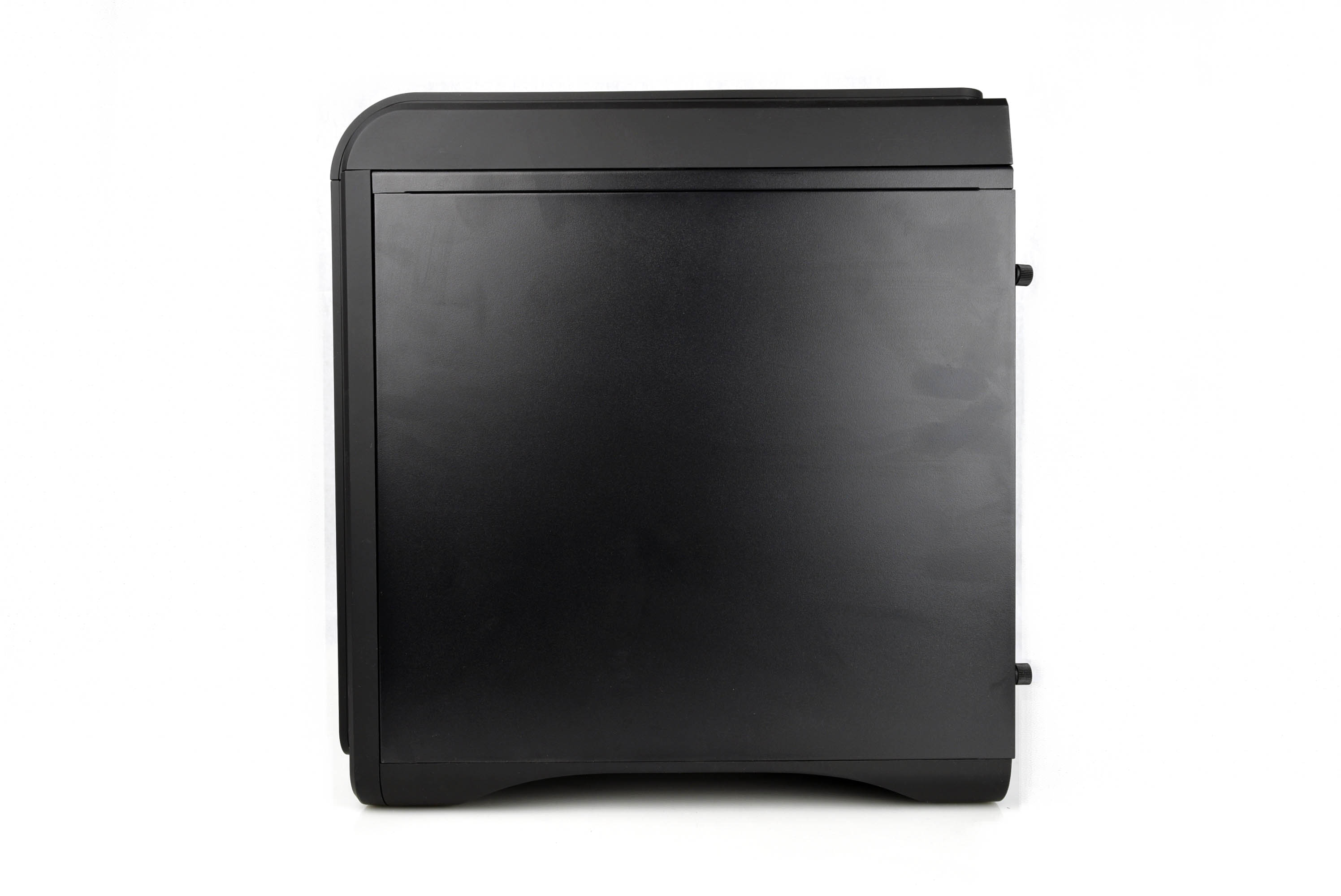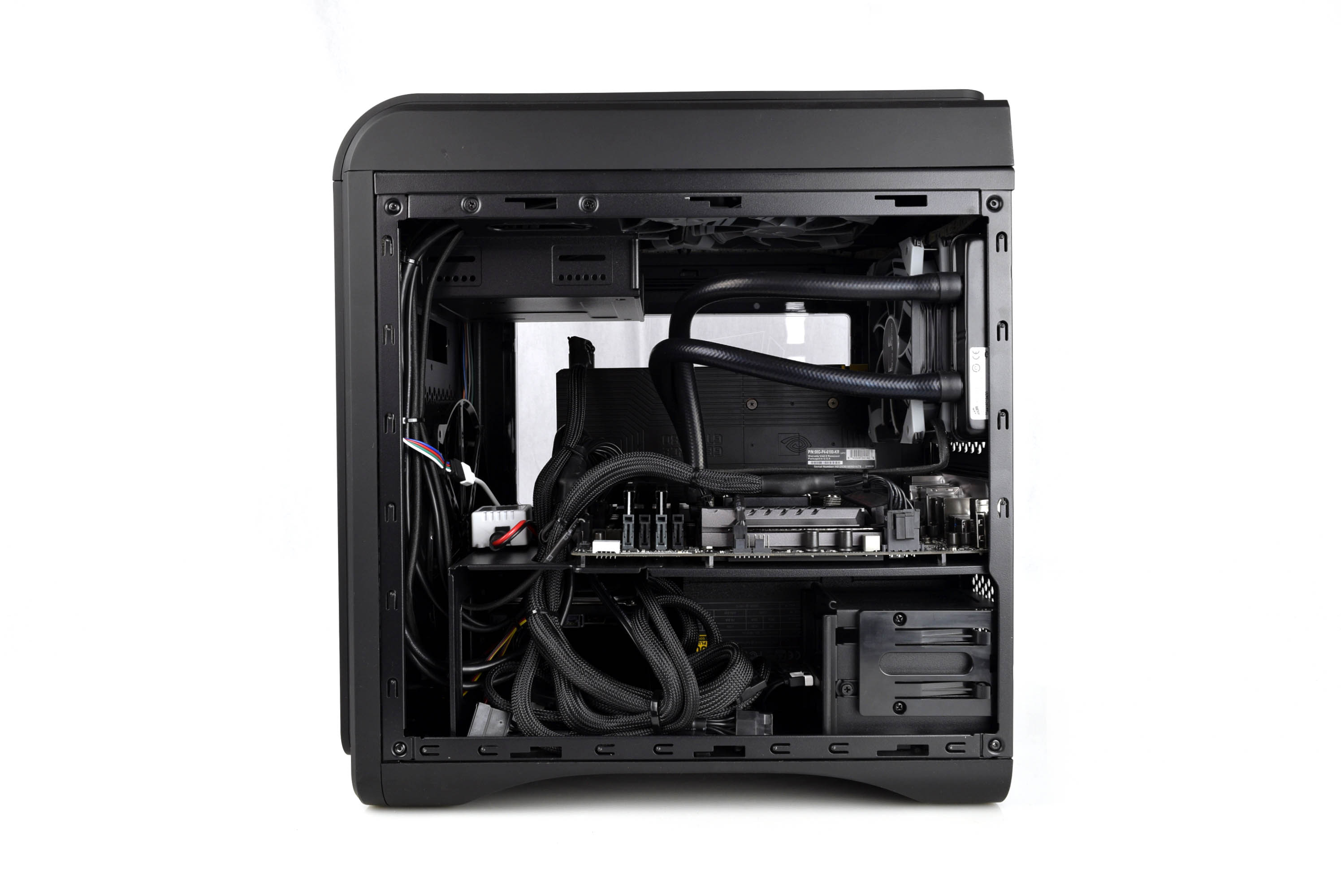Early Verdict
We’d be hard pressed to recommend the Avatar to consumers looking for a PC with the latest and greatest storage technology or the fastest GPU clock frequencies, but AVADirect offers a powerful machine with an above-average CPU overclock and eye-catching (yet not blinding) aesthetic bonuses. If power, simplicity, and stability are your primary buy factors, the AVADirect Avatar fits the bill, albeit at a higher-than-average price tag.
Pros
- +
High CPU overclock
- +
Attractive chassis
- +
Stability
Cons
- -
Lack of Next-Gen SSD options
- -
Price
Why you can trust Tom's Hardware
Introduction And Product Tour
Not long after we asked AVADirect to send us a powerful yet practical desktop PC, the Avatar arrived at our doorstep, equipped with an Intel Core i7-6700K, 16GB of DDR4-2400, and an Nvidia GeForce GTX 1080 graphics card. At $2,509, the Avatar isn’t exactly a budget-friendly configuration, so we subjected it to our rigorous test suite to determine if the performance and extra features warrant the price.
Specifications
Exterior
AVADirect uses a retail Aerocool DS Cube case for the Avatar. It supports micro-ATX motherboards and comes with three 120 mm “Dead Silence” fans (two exhausting at the top, one rear fan on the radiator), and a 200 mm front intake fan. The case features a steel and plastic construction with 0.8 mm SGCC for increased sound dissipation. The front panel sports a smooth leather surface, which feels more rubbery than leathery, but it’s a unique feature that deters smudging on the case.
The top panel features a removable cover (the retail case includes both the ventilated and solid covers), but AVADirect ships the Avatar with only the ventilated cover, and the removable panel simply makes it easier to clean. The PSU fan intake on the bottom of the chassis also sports a removable filter for easy cleaning.






The left side panel features a clear window etched with an AVADirect Avatar logo. It showcases an upright GPU and motherboard with a custom 20-color LED strip (for an extra $30) that illuminates the entire chassis. The LEDs also come with a remote control. The motherboard’s onboard start and reset buttons are also visible through the 10.62 x 6.10" side window.
The front panel I/O (which resides on top of the chassis) features two USB 2.0 ports and two USB 3.0 ports, in addition to the power and reset buttons, and mic-in headphone-out jacks. The chassis also sports a 5.25" and 3.5" drive bay, but AVADirect doesn't include an optical drive or additional I/O to occupy the slots. The rear motherboard panel has six USB 3.0 ports, in addition to USB 3.1 Type-C and Type-A ports (one of each) capable of 10 Gb/s data rates. The Type-C port also supports Thunderbolt 3, with speeds up to 40 Gb/s. For old-schoolers, there’s also a PS/2 port for legacy mice or keyboards (or both, with a splitter).





The motherboard also sports an HDMI 1.4 port and a DisplayPort 1.2 interface, although you likely won’t use them unless you are connecting to a ridiculous number of displays. The GPU features three DisplayPort 1.2 interfaces, in addition to an HDMI 2.0 port and a DVI-D port.
The back panel audio (powered by ROG SupremeFX 2015) sports 1.4 mm gold-plated input and output jacks (five) and an optical S/PDIF interface. The Intel I219V Gigabit Ethernet controller powers a single RJ45 port, and the system is devoid of wireless internet capabilities.
Get Tom's Hardware's best news and in-depth reviews, straight to your inbox.
Interior
AVADirect equipped the Avatar with an Intel Core i7-6700K, 16GB (2 x 8GB) of Kingston HyperX DDR4-2400 (with CAS timings of 15-15-15-35), and an EVGA GeForce GTX 1080 Founder’s Edition GPU. The CPU is overclocked to an impressive and stable 4.7GHz on all four cores, for a 17.5% increase over the stock frequency. Surprisingly, this isn’t the furthest the company can push the processor (the $25 fee for the “mild” overlock guarantees up to a 20% clock increase over the base 4.0GHz clock frequency of the i7-6700K), and the Extreme Overclocking service would likely yield even higher clock rates. The EVGA GTX 1080 Founder’s Edition is not overclocked and features Nvidia’s reference clock rates.
The Avatar has a feature-rich Z170 motherboard in the form of the Asus Maximus VIII Gene, which leaves room for expansion with an open M.2 slot and another PCIe 3.0 x16 lane (for a total of two) you can use to upgrade to an SLI configuration. The PCIe 3.0 x4 lane can also be used to add a wireless networking card or another PCIe storage device (presuming you don't occupy the second x16 slot with another 2-slot GPU), and it’s compatible with Intel Rapid Storage Technology for PCIe RAID storage (meaning you could use an Asus Hyper Kit PCIe to M.2 adapter card with another M.2 SSD in the M.2 slot to configure a RAID setup). Unfortunately, AVADirect doesn't offer configurations like this (it doesn't even offer M.2 PCIe SSD storage), so any such aspirations for this sort of array would be up to the user to implement.







For storage, AVADirect’s Avatar features a 500 GB Samsung 850 EVO SATA SSD, which resides in the 2.5" drive bay on the right side of the chassis. There's also room for another 2.5" drive if you want to expand your storage. A 1 TB 7,200 RPM HDD is accessible through the left side panel and provides plenty of space for music, pictures, or applications that don’t require the SSD’s throughput.
The rig is powered by an 80 Plus Gold-certified EVGA Supernova 850 G2, which features a single 12V rail and full modularity. The cables are of stock variety, but are expertly run throughout the case for a neat and clean look.



The Avatar’s CPU is water cooled by default, with a 120mm closed-loop radiator by Corsair (it appears to be an H60, sans fans). The radiator is mounted directly against the chassis at the rear fan mount. The case fan is remounted to the other side of the radiator and operates as a “push” fan, exhausting heat out the back of the case, through the radiator. The GPU features a blower fan and vapor chamber to vent heat out the rear as well.
MORE: Best PC Builds
MORE: How To Build A PC
MORE: All PC Builds Content
Derek Forrest was a contributing freelance writer for Tom's Hardware. He covered hardware news and reviews, focusing on gaming desktops and laptops.
-
Luko92 You can build yourself the same configuration for less than 2000$ and you can choose a less expensive mobo, better fans, case, RAM, SSD, and GPU for the same price.Reply
Why should I buy an Avatar?
If you are not able to build it yourself it'll cost you around 50$, not 500$. -
razor512 It is a massive ripoff, While I could not get the same case, I picked parts for an equivalent system. and ended up with a significantly lower price. Building it yourself, will be $783.84 cheaper. that is enough money to buy an extra GTX 1080, and a 256GB Samsung 950 Pro SSD to go along with your 500GB 850 evo, and 1TB HDD.Reply
Building that same system:
Base Total: $1745.38
Mail-in Rebates: -$30.00
Shipping: $9.78
Total: $1725.16
https://pcpartpicker.com/list/wdQMM8
This same build on black Friday, would have been about $1600 -
c4s2k3 I also prefer to build gaming rigs vs. buying turn-key system, but this is clearly aimed at people who are willing to spend more and spend zero time pairing components, price hunting for components, building, testing, loading OS, tweaking BIOS configurations, or any such thing.Reply
Some people simply place higher value on their time than those of us who enjoy building a rig, and from that perspective, systems like these are far from a "rip off". -
razor512 The issue is that this goes beyond people paying extra to get prebuilt system, these markups are worst than apple's markups.Reply -
diblaze 1 there is a three year warranty . most places charge 300.00 or more for it .even though the parts come with there own warranties out of the box. for the added piece of mind and warranty, and w/o the hassle of building it. i think it's a good buy ...of course my hands don't work like they used to.Reply
